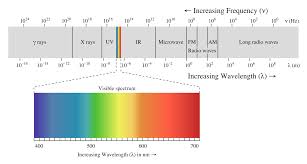Using light fidelity (Li-Fi) – a wireless technology that is based on visible light communication (VLC), the transmission of data at speeds of up to 224 gigabits/second is already a reality. The potential of this technology is claimed to provide speeds 100 times faster than what the traditional Wi-Fi offers, which is slated to bring a radical change in the way we use the Internet.
In the next step, the technology is already out of the laboratory environment to undergo trials in offices and industrial environments, as quoted by Velmenni, the Estonian start-up that is backing the development of the technology to attain the desired speed of 1 GB/second, a speed that will allow users to download a full HD movie in just a few seconds.
In the next step, the technology is already out of the laboratory environment to undergo trials in offices and industrial environments, as quoted by Velmenni, the Estonian start-up that is backing the development of the technology to attain the desired speed of 1 GB/second, a speed that will allow users to download a full HD movie in just a few seconds.
Browse Research Report:http://www.transparencymarketresearch.com/visible-light-communication-market.html
Due to the buzz around VLC for data transmission, market research analytics indicate that the global VLC market will be rising at an outstanding 109.20% CAGR between 2015 and 2022, according to a study carried out by Transparency Market Research. In 2014, North America accounted for a phenomenal 43.4% of the overall market revenue, however, whether Li-Fi will attain an important place as a mainstream communication channel in North America is something only time will tell.
How does VLC Work for Data Transmission?
In a communication system that works on VLC, an LED (light emitting diode) is used as the emitter source, which inherently provides high-speed flickering at rates invisible to the naked eye to perform illumination and data communication simultaneously. The key to the eminence of the technology lies in its cost-effectiveness and its value as a supplementary technology to the popular radio frequency (RF) communication channels, which have lately been facing spectrum constraints.
However, the utilization of VLC for data transmission has its own specific requirements, the availability of continuous visible light being the basic one and one that may not be feasible at all places. A break of even a fraction of a second terminates a VLC data transmission connection, so availability of a continuously operable light source is key to large-scale utilization of VLC as a data transmission medium.
Industry Collaborations to Issue Standard Specifications for Communication Purposes
VLC technology, still in its nascent stage, does not have a universally agreed standard about the specifications of the light source. The invention of LED light, which has been invented and developed over the last five decades, has been pivotal in the use of VLC technology for data transmission. The surging adoption of LED lighting will be beneficial for higher utilization of VLC as a communication channel. With collaborations between LED OEMs (original equipment manufacturer), research agencies, and vendors, development of improved LED lighting products will overcome the barriers that are currently blocking its integration with VLC.
That VLC is gaining traction is resonated with the utilization of the technology across a few end users. In this regard, retail indoor positioning was the largest application segment and contributed a phenomenal 57.5% of the total revenue to the global visible light communication market in 2014.
That VLC is gaining traction is resonated with the utilization of the technology across a few end users. In this regard, retail indoor positioning was the largest application segment and contributed a phenomenal 57.5% of the total revenue to the global visible light communication market in 2014.

No comments:
Post a Comment